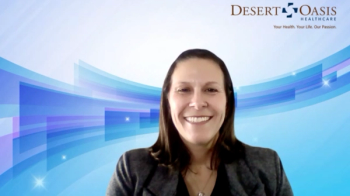
As NYC's Big Soda Ban Awaits de Blasio, Science Firmly on the Side of Smaller Portions
This month's edition of Evidence-Based Diabetes Management, a news source of The American Journal of Managed Care, examines the science behind Mayor Michael Bloomberg's pursuit of soda portion limits, as well as alternatives for curtailing consumption to fight obesity. Soon after Mayor-elect de Blasio takes office, he must decide how to achieve Bloomberg's goal, including whether to continue litigation before the New York State Court of Appeals.
FOR IMMEDIATE RELEASE DECEMBER 23, 2013
As NYC’s Big Soda Ban Awaits de Blasio, Science Firmly on the Side of Smaller Portions
PLAINSBORO, N.J. — New York City Mayor-elect Bill de Blasio is getting attention this week for his Cabinet picks and his vow to address income inequality. But since the election, he has been quiet about one leftover on his plate: What to do about proposed portion limits on soda.
This month’s edition of Evidence-Based Diabetes Management, a news source of The American Journal of Managed Care, examines the science behind Mayor Michael Bloomberg’s pursuit of soda portion limits, as well as alternatives for curtailing consumption to fight obesity. Soon after Mayor-elect de Blasio takes office, he must decide how to achieve Bloomberg’s goal, including whether to continue litigation before the New York State Court of Appeals.
In October, de Blasio said he supported soda drink limits, though his team might revisit Bloomberg’s path to enact them. His transition team declined multiple opportunities to comment for the story. For a copy,
While Bloomberg’s ban divided opinion — and inspired plenty of late night jokes – the scientific community isn’t laughing about the need to limit soda intake. Evidence-Based Diabetes Management interviewed Kimber Stanhope, PhD, RD, and a researcher from the University of California at Davis who testified before the Mexican Congress on its new soda tax. In fact, Mayor-elect de Blasio will take office the same day Mexicans start paying a soda tax of 1 peso per liter (about 8 cents). Also interviewed is Y. Claire Wang, MD, of Columbia University, whose 2010 study found that a similar tax in New York State could have avoided 37,400 cases of diabetes over a decade and saved New Yorkers $1.2 billion in healthcare costs.
Capping soda sizes is a notable area of agreement between de Blasio and Bloomberg, whose plan to ban servings larger than 16 ounces hit roadblocks in court on the eve of its implementation in March. In October, New York’s Court of Appeals agreed to hear the Bloomberg administration’s appeal of the lower court ruling, which critiqued the rule on procedural grounds but did not challenge the science behind it.
Stanhope’s work has found that healthy, young adults who consume three servings a day of drinks sweetened with high-fructose corn syrup had significant spikes in LDL (low-density protein), the so-called “bad” cholesterol. “Somebody should be looking at that and blinking,” she told EBDM.
High-fructose corn syrup is the cheap alternative to sugar used by many soda manufacturers, although until now, Coca-Cola has retained pure cane sugar in its Mexican version, known as “Mexicoke.” However, Coca-Cola has discussed switching to high-fructose corn syrup to cut the cost of the drink in response to the new tax.
While the transition team did not respond to EBDM’s requests for comment, candidate de Blasio voiced support for Bloomberg’s philosophy on this issue. In October, he said, “Chirlane and I spend a lot of time working to make sure Dante and Chiara are healthy. That means encouraging nutrition … Unfortunately as parents, it feels like every day we’re fighting an enemy, and that is the growing availability of bigger and bigger sugary drinks.”
CONTACT: Mary Caffrey (609) 716-7777 x 144 office
(609) 731-8802 cell
Newsletter
Stay ahead of policy, cost, and value—subscribe to AJMC for expert insights at the intersection of clinical care and health economics.








































